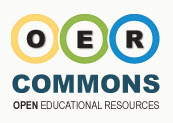Difference between revisions of "Open Educational Resources"
| Line 18: | Line 18: | ||
* 43% are intellectually-curious types with free time | * 43% are intellectually-curious types with free time | ||
* 42% are students seeking extra help on their coursework | * 42% are students seeking extra help on their coursework | ||
| + | |||
| + | ===Why use open educational resources?=== | ||
| + | Textbooks have become one of the largest expenses for students, other than curriculum fees. [http://epaa.asu.edu/ojs/article/view/1828/1763 Tidewater Community College]used all OER materials for their associate of science degree in business administration, and saw a significant reduction in student drops from the program. | ||
===What about copyright law?=== | ===What about copyright law?=== | ||
Revision as of 12:40, 1 November 2017
Contents
What are open educational resources?
Open Educational Resources (OER) are instructional materials that are made available for instructors and/or learners to use for free.
- See a few examples of OER materials and what you can do with them
- This article provides in-depth information on the open educational resources movement:
Hafner, Katie. "An Open Mind." New York Times 16 April 2010.
Who pays for this?
The open educational resource movement has been funded in large part by The William and Flora Hewlett Foundation, which has given more than $100 million over the last 8 years to MIT, Yale, and others "to increase access to knowledge for all and improve the practices of teaching and learning" (Hafner). The Gates Foundation, numerous colleges and universities, and others are also involved in developing and providing access to open educational resources.
Who uses open educational resources?
MIT reports that of those who use their OpenCourseWare resources...
- 9% are instructors
- 43% are intellectually-curious types with free time
- 42% are students seeking extra help on their coursework
Why use open educational resources?
Textbooks have become one of the largest expenses for students, other than curriculum fees. Tidewater Community Collegeused all OER materials for their associate of science degree in business administration, and saw a significant reduction in student drops from the program.
What about copyright law?
Open educational resources are made available in order to be shared. However, the creator or owner may have "some rights reserved." Many open educational resources have a public license (such as a Creative Commons license) that specifies how the materials may be used, adapted, and shared. Typically, you are asked to give credit to the creator or owner of the materials.
Where can I find open educational resources?
Below are links to just a few of the many sites that provide access to open educational resources. Some of these sites showcase the products of elite universities, while others are repositories to which anyone can contribute content.
The Open Textbook Network (OTN) "promotes access, affordability, and student success through the use of open textbooks." OTN has over 100 active network members. It's goal is to help higher education institutions and systems "advance the use of open textbooks and practices on their campuses." OTN maintains a library with open textbooks available for faculty to use, adapt and distribute.
The College Open Textbooks Collaborative, a collection of twenty-nine educational non-profit and for-profit organizations, affiliated with more than 200 colleges, is focused on adoptions of open textbooks, particularly, community college adoptions of open textbooks. According to their web site, they provide "training for instructors adopting open resources and provide peer reviews of open textbooks". Here's a way to get started, using their Adoption Resources.
MIT launched the open educational resources movement in 2002 when it began making course materials publicly available. Today, their OpenCourseWare initiative includes 2,000 courses available for self-study or instructor use.
A curated collection of video lectures and associated course materials from 20 top universities. This site is well-designed and easy-to-use, and features a "grading" system for rating lectures.
"The best free cultural & educational media on the web." This curated collection includes extensive lists of free educational videos, online courses, textbooks, audio books, etc. The person who created and runs this site is also Director of Stanford University's Continuing Education program.
Open Professionals Education Network
The Open Professionals Education Network (OPEN) provides free support and technical assistance to all grantees of the $2 billion Trade Adjustment Assistance Community College & Career Training (TAACCCT) grant program from the U.S. Department of Labor. For information about TAACCCT, visit http://www.doleta.gov/taaccct.
This site allows you to search and access educational materials from its 65 partner organizations. Using "Advanced Search" you can specify a subject area, grade level (primary, secondary, post-secondary), material type and format, etc.
Here you can access free materials contributed by thousands of educators world-wide. You're free to use, modify, and distribute content you find here (as long as you give credit to the original source). You can also upload and share your own creations.
The North Carolina Learning Object Repository (NCLOR) follows the spirit of OER by providing a place for NC educators to share instructional materials. Instructors from around the state can "explore the LOR" and locate documents, web links, audio/video clips, simulations, assessments, and other materials to use and/or modify. They can also contribute content for others to use.
